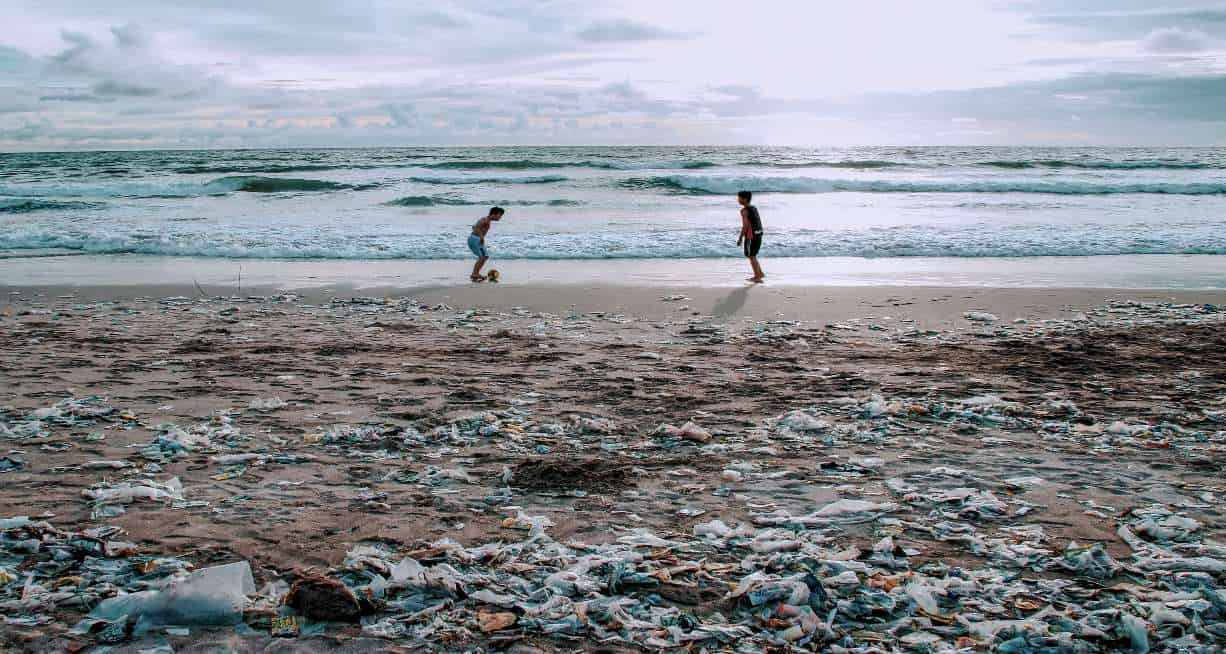The problem of plastic trash in the ocean is nothing new. But the discovery of a huge garbage patch in the middle of the Pacific Ocean in 1997 confirmed scientists’ fears; the scale of the issue was much larger than our land-based perspective could appreciate. Over time, the Great Pacific Garbage Patch was revealed to be just one of several offshore plastic accumulation zones, albeit the largest in the world.
Since its discovery, researchers have been busy trying to measure the exact scale of this ocean garbage patch and figure out how it came to be, as well as working on solutions to mitigate the problem. The term “Great Pacific Garbage Patch” conjures images of a huge plastic island of waste floating in the ocean. But in fact, the patch is sparsely dispersed and comprised largely of microplastics, making it difficult to observe from above or clean up.
So how big is the Great Pacific Garbage Patch, how did it originate, and what can we do about it?
GREAT PACIFIC GARBAGE PATCH
What Is The Great Pacific Garbage Patch?
Also known as the Pacific trash vortex, the Great Pacific Garbage Patch sprawls across 1 million square miles in the central North Pacific Ocean. It is the largest of the world’s offshore plastic accumulation zones and is divided into two areas – the Eastern Garbage Patch (extending between Hawaii and California) and the Western Garbage Patch (extending between Japan and the Hawaiian Islands). The North Pacific Subtropical Convergence Zone links these patches of spinning debris, with warm water from the South Pacific meeting cooler water from the Arctic – effectively moving the debris from one patch to the other.
Oceanographers have predicted this great garbage patch in the Pacific Ocean for a long time. But it wasn’t a reality until Charles Moore, a racing boat captain, saw it with his own eyes while competing in a yacht race in 1997. When his crew looked overboard to see millions of pieces of plastic surrounding their vessel, the Great Pacific Garbage Patch’s existence was confirmed.
As a result of currents and winds, the exact location and shape of the Great Pacific Garbage Patch are constantly changing. By simulating concentration levels in the North Pacific Ocean, scientists predict that it roughly orbits around 32°N and 145°W and is bounded by the North Pacific Subtropical Gyre. Its low density prevents it from being detected by satellite imagery, not only because of its widely dispersed area but also because much of it is suspended in the upper water column as microplastics.
Researchers from the Ocean Cleanup project estimate that the plastic concentration in this garbage island is up to 354 pounds per square mile in the center, with this figure reducing to around 35 pounds per square mile in its outer reaches. In total, around 1.8 trillion pieces of plastic are thought to be floating in the Great Garbage Patch, whose mass has been estimated at around 80,000 tons. To put in perspective just how big this Great Pacific Garbage Patch is, it’s equivalent to 500 jumbo jets or around 250 pieces of plastic debris per human on earth. Toothbrushes, water bottles, plastic bags, and cell phones – they all end up being lured into the North Pacific Subtropical Gyre.

What Is The North Pacific Subtropical Gyre?
As defined by the National Oceanic and Atmospheric Administration (NOAA), a gyre is a large system of circulating ocean currents. However, the term is increasingly being used to refer to floating garbage islands found in many of our oceans. There are five major gyres in our oceans: the North and South Pacific Subtropical Gyres, the North and South Atlantic Subtropical Gyres, and the Indian Ocean Subtropical Gyre.
The North Pacific Subtropical Gyre is created by four currents that rotate clockwise around an area of 12.4 million square miles. These include the California current, the North Equatorial current, the Kuroshio current, and the North Pacific current. At the center of the gyre is an area that’s relatively stable, it’s this area’s circulatory motion which draws marine plastic and debris in. Here it becomes trapped and gradually accumulates, resulting in the sea of plastic that we know today as the Great Pacific Garbage Patch.
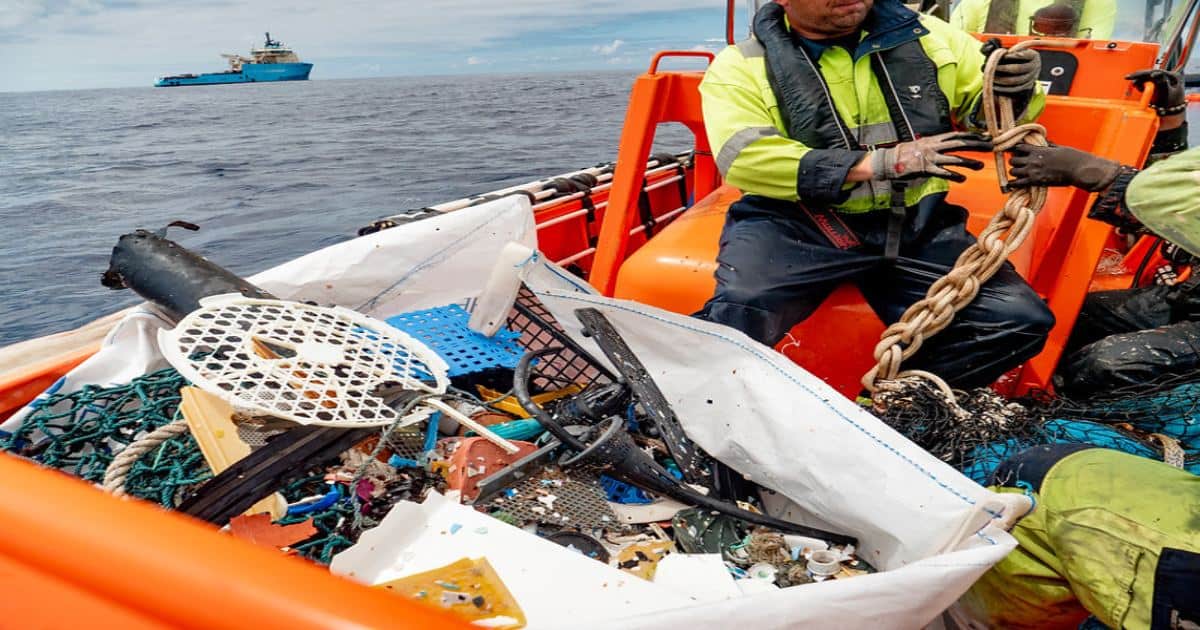
How Does Waste End Up In The Ocean?
It’s been estimated that around 100 million tons of plastic waste is generated around the world every year. Plastic’s durability, low cost, and malleable nature make it a convenient and cost-effective material for a wide variety of consumer and industrial products.
Anywhere from 1.15 to 2.41 million tons of plastic enters our oceans every year from rivers alone. Most plastics are less dense than water and so won’t sink once they enter the ocean. Strong, buoyant plastics like these can be transported long distances from the shore and into converging currents. Upon entering the gyre, the effects of the sun, waves, and marine life will break them down into smaller pieces in a process known as photodegradation. Eventually, this becomes what’s known as microplastics, which is the majority of what is found in the Great Pacific Garbage Patch.
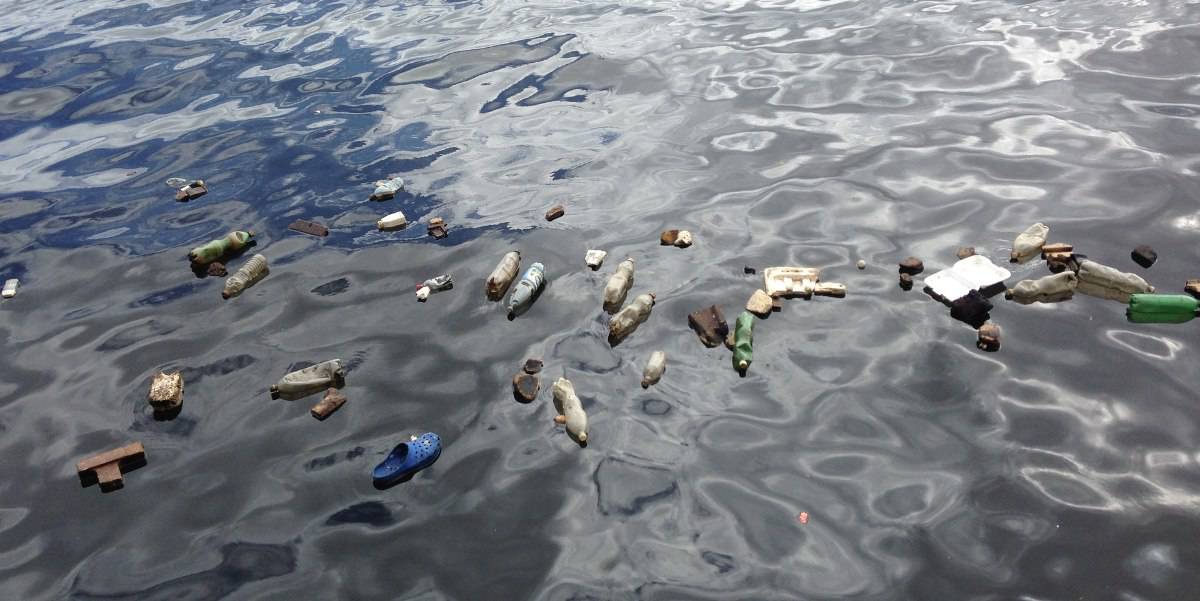
So contrary to popular belief, the Great Pacific Garbage Patch isn’t a great garbage island in the ocean. Rather, it’s a cloudy soup of microplastics mixed in with a few larger items, such as abandoned fishing nets. Aside from what can be seen at the surface, oceanographers recently discovered that around 70% of marine debris sinks to the bottom of the ocean, out of sight and out of mind.
Add to that the fact that the North Pacific Subtropical Gyre is simply too immense for researchers to trawl, nobody knows exactly how much waste and debris the Great Pacific Garbage patch contains. Recent ocean voyages and aerial surveys by the Ocean Cleanup project discovered that more debris was found in the heart of the accumulation zone than was expected. Research also shows that around 54% of the debris found in the patch originates from North America and Asia, while the remaining comes from offshore oil rigs, boaters, and large cargo ships that either lose or purposely dump their load into the water.
What Is The Impact Of Ocean Plastics On Marine Life?
One of the biggest concerns associated with the Great Pacific Garbage Patch and ocean plastics in general is the affect they are having on marine life. Some species are prone to getting entangled in abandoned fishing nets, which eventually leads to them drowning in what’s become known as “ghost fishing”. Perhaps you’ve seen images of turtles snared in six-pack rings or trying to ingest plastic bags, which they mistake for edible jellies. Seabirds can’t escape the devastating impact of ocean plastics either, with albatrosses regularly mistaking plastic resin pellets for fish eggs, which they feed to their young who quickly die from malnutrition.
But it’s not only large ocean dwellers who are impacted by garbage in the ocean. As microplastics accumulate near the water’s surface, they block sunlight from reaching plankton and algae below. These autotrophs play a vital role in producing nutrients for the marine food web using carbon and sunlight. When their ability to function properly is threatened, the fish that feed on them will have less food (and their populations will decrease), as will those of apex predators such as sharks and whales.
When exposed to ultraviolet light from the sun, the hazardous ingredients that are used in the manufacturing process of plastics undergo a chemical reaction, resulting in leachate that’s known as plastic “tea”. They leach out colorants and chemicals that have been linked to both environmental and health issues, as well as absorbing pollutants and oils from the surrounding water. These concentrated toxins are then ingested by marine species, gradually absorbed up the food chain and biomagnified. They even threaten our seafood industry, with pieces of tiny plastic and chemical toxins found in fish destined for human consumption.
A research study at Macquarie University in Sydney has also revealed that chemicals leaching from plastic products are harming oxygen-producing bacteria. They looked at the effects of plastic toxicity on Prochlorococcus, a genus of marine cyanobacteria that number around an octillion (equal to 1 followed by 27 zeros). They are the most abundant photosynthetic organisms on earth, producing around 10% of our oxygen needs. The study looked at how plastic leachate impacted the ability of Prochlorococcus to grow and reproduce, with results showing significant population losses compared to those that weren’t exposed.
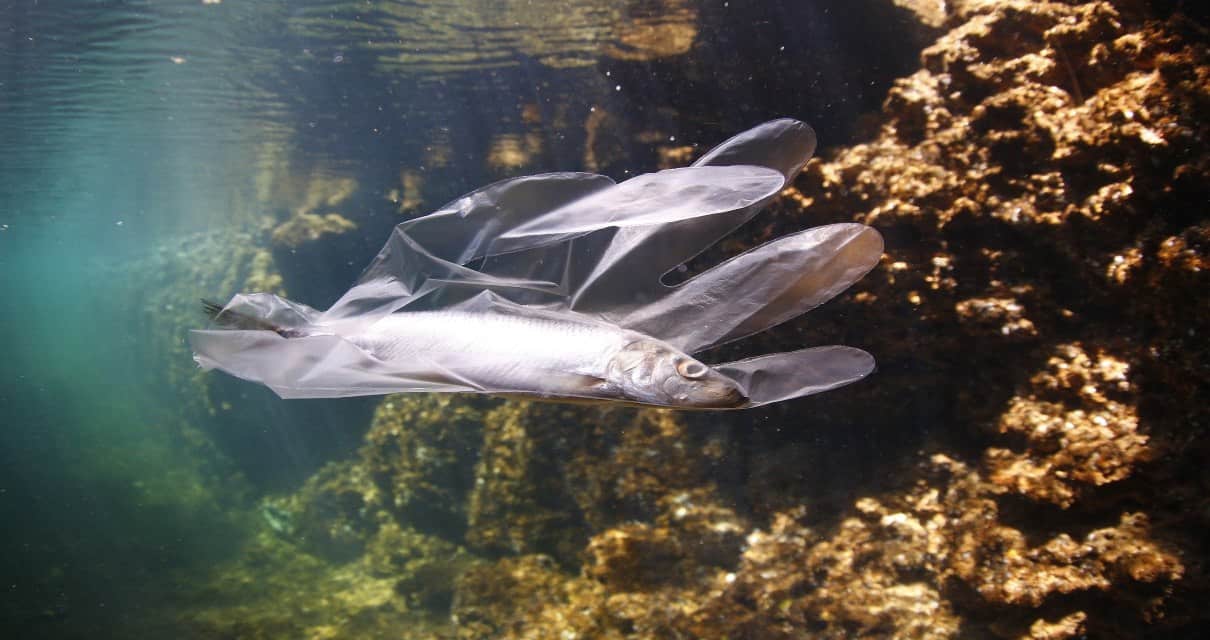
How Do Ocean Plastics Affect Coral Reefs?
Also negatively impacted by plastic waste in the ocean are coral reefs. A recent study at Cornell University in Ithaca, New York found that coral reefs affected by plastic pollution were more likely to contract diseases than those that were plastic-free. The researchers studied more than 150 reefs across the Asia-Pacific region and looked at the occurrence of white syndrome and black band disease, both of which can have a devastating impact on corals. They discovered that reefs free from plastic waste only had a 4% likelihood of being diseased, while those impacted by plastic pieces larger than 0.5 centimeters were at an 89% risk.
It’s thought that the low-light, low-oxygen conditions created when plastic settles on coral is ideal for microbes that cause diseases to flourish. Hard plastic waste in the ocean can also physically damage corals leading to infections, or it may get trapped within branching corals and prevent juvenile marine life from being able to use these structures as nurseries.

Cleaning Up The Great Pacific Garbage Patch
Due to its vast size and scale, rehabilitating the Great Garbage Patch is far from simple. It’s far enough from any country’s coastline that none is willing to take on the financial burden of its clean up. To put things in perspective, the National Ocean and Atmospheric Administration’s Marine Debris Program has estimated that it would take 67 ships around a year to clean up less than 1% of the North Pacific Ocean.
That being said, many international organizations have committed to halting the Great Pacific Garbage Patch’s growth. The man who first discovered this plastic island back in 1997, Charles Moore, is helping to raise awareness about the issues around ocean plastics through the Algalita Marine Research Foundation. In addition to conducting aerial drone surveys of the patch and discovering more permanent “islands” of waste, the foundation is raising awareness about the devastating effects of our plastic consumption.
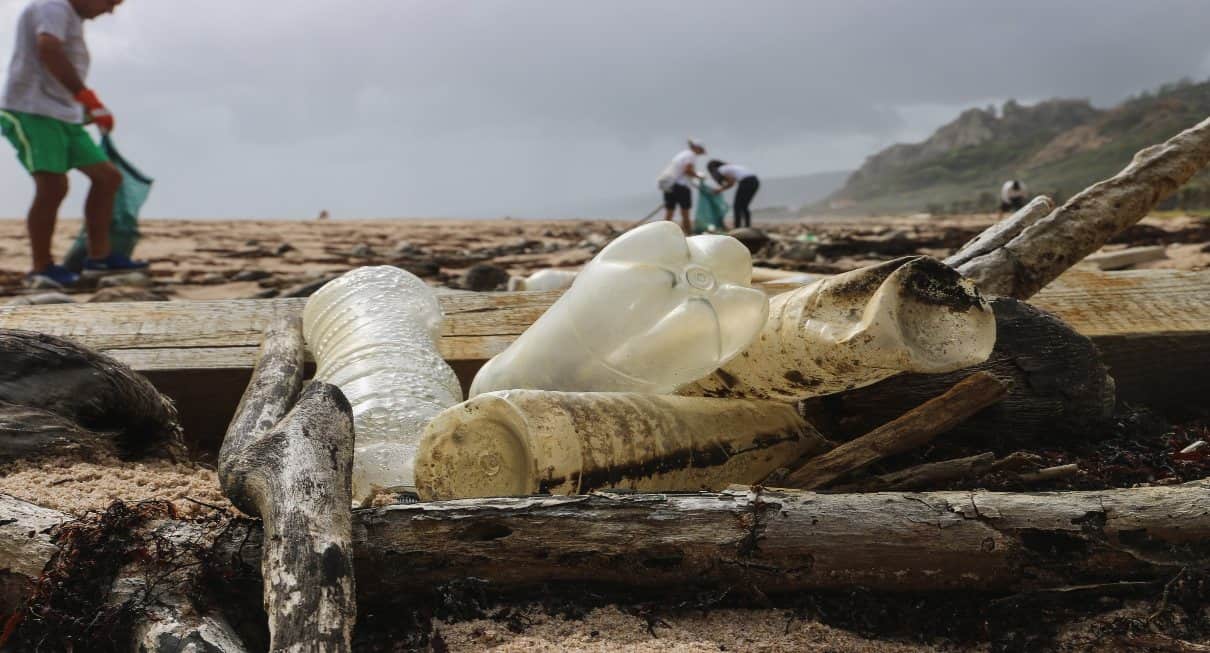
The Ocean Cleanup Project
The Ocean Cleanup is also tackling the issue of the Great Garbage Patch, with this nonprofit organization on a mission to remove 90% of ocean plastic pollution. Founded by the young Dutch inventor, Boyan Slat, it’s developing technology that will not only extract plastic from the oceans but also intercept it in rivers before it makes its way out to sea.
The Ocean Cleanup’s passive ocean system consists of a long floater that lies at the surface of the water to provide buoyancy and a skirt that hangs beneath to prevent debris from escaping. Because of the sheer size of the Great Pacific Garbage Patch, the cleanup system relies on natural forces to navigate the ocean and features a sea anchor to create drag. This slows down the system and allows plastic waste to be both captured and retained.
These passive systems are designed to capture plastics of all sizes, from tiny microplastics just millimeters in diameter up to large pieces of plastic debris and discarded fishing nets. The Ocean Cleanup’s models show that with a full-scale roll-out, around 50% of the Great Pacific Garbage Patch could be cleaned up in just five years.
In October 2019, the Ocean Cleanup revealed their “Interceptor”, a new invention that aims to address the problem of ocean plastic waste much closer to the source. Recognizing that rivers are one of the main means of waste entering the ocean, they plan to intercept rubbish being transported along 1,000 of the world’s most polluting rivers over a five-year period.
The Interceptor is a 100% solar-powered, catamaran-style vessel that extracts plastic as it flows along a river’s current. The plastic is then carried onto a conveyer belt and into dumpsters, with the debris ending up in local waste management facilities. All of the Interceptors are internet-connected, which not only allows data to be continually collected but also enables local operators to be notified once the dumpsters are full.
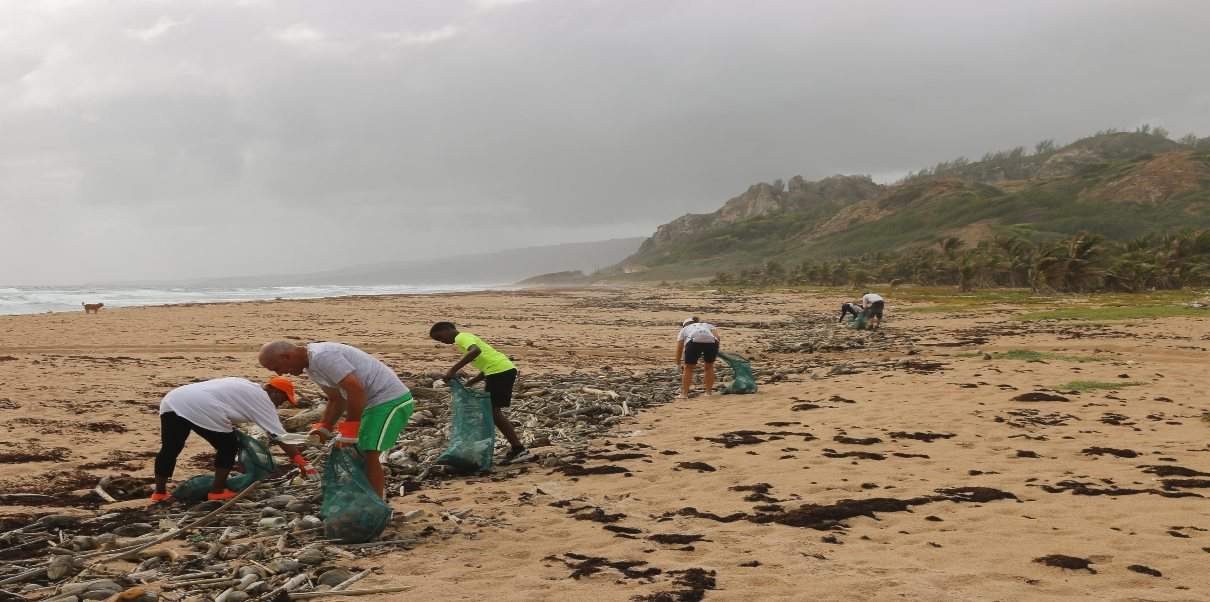
SOURCES
Great Pacific Garbage Patch
- Great Pacific Garbage Page, theoceancleanup.com
- Great Pacific Garbage Patch, nationalgeographic.org
- What Is A Gyre?, oceanservice.noaa.gov
- Plastic Poisons Ocean Bacteria That Produce 10% Of The World’s Oxygen And Prop Up The Marine Food Chain, theconversation.com
- Plastic Waste Associated With Disease On Coral Reefs, sciencemag.org
- Three Misconceptions About The Great Pacific Garbage Patch, oceana.org
REACH OUT
We always speak about ‘They’. They need to do something about the plastic problem. They need to stop overfishing. What They are doing to our oceans is simply unacceptable. But who are They?
The government? The government is an administrative body elected by the people. The government exists only to serve out the needs of those people. They is in fact our society, a collection of individuals. You are one of those individuals, and so am I. There is no They, there is only We, and We are all part of the problem. However, We can choose to be part of the solution instead. Sure, sometimes it feels like one individual has such a small chance of creating meaningful change – so why bother. But remember, if everyone had that mindset, there is 100% chance that nothing will change.
We only have one Earth. We can make a difference.
You have a Part to Play – join us in our fight against the Ecological Disaster of our Age.


